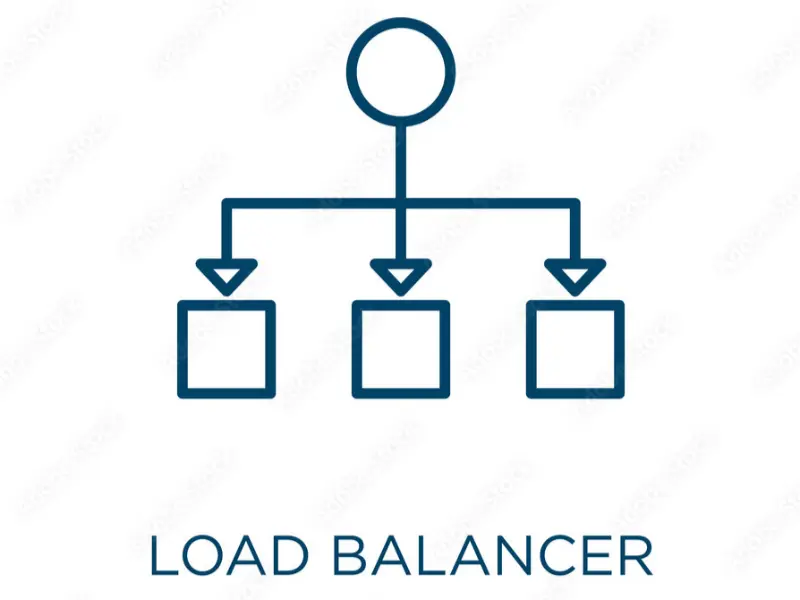- Load balancing optimises cloud performance by distributing traffic evenly across servers, improving system responsiveness and efficiency.
- With real-time health checks and automatic scaling, load balancers ensure high availability and adaptability in dynamic cloud environments.
- Despite its benefits, load balancing introduces complexity and cost, requiring strategic implementation to avoid increased security risks or potential outages.
In the digital age, with millions of people accessing web services simultaneously, maintaining a smooth and efficient online experience is critical. Load balancers play a vital role in achieving this by distributing incoming network traffic across multiple servers in a cloud environment.
This mechanism ensures that no single server bears too much load, which can lead to performance degradation or outages. By optimising resource utilisation through sophisticated algorithms and ensuring high availability and scalability, load balancing is essential to meet the huge demands placed on modern web infrastructure.
What is a load balancer
A load balancer is a network device or software application that distributes and balances incoming traffic between servers to ensure high availability, efficient server utilisation and high performance.
Also read: What is Network as a Service (NaaS) in cloud computing?
How does a load balancer work
The primary function of a load balancer is to distribute incoming network traffic across multiple servers. This distribution helps to ensure that traffic is handled in a balanced manner, which improves response times and maximises the use of server resources. Common traffic distribution algorithms include round-robin, least connections and IP hash.
This process reduces latency by not overloading resources. Load balancers constantly monitor server health and direct traffic only to servers that are online and able to handle requests. They dynamically adjust the number of active servers based on demand, optimising response times and ensuring high availability and reliability.
Types of load balancers
Software load balancers in clients: These load balancers reside within client applications, such as mobile applications, and handle load balancing directly from the client side. The application is given a list of servers and chooses one to request data from. If a server fails, the application retries with other servers from the list. This method is cost effective and easy to implement.
Software load balancers in services: These are software-based solutions installed on standard devices such as Windows or Linux machines. They receive and redirect requests based on pre-defined rules, offering flexibility and lower costs compared to hardware load balancers. Users can choose off-the-shelf solutions or develop custom load balancers to meet specific needs.
Hardware load balancers: These physical devices, also known as Layer 4-7 routers, distribute traffic across a network of servers. Capable of handling HTTP, HTTPS, TCP and UDP traffic, hardware load balancers provide robust performance and reliability through health checks and network address translation. However, they are expensive and less flexible and are typically used by larger organisations.
Virtual load balancers: Implemented as virtual machines or software instances in virtualised environments such as VMware or Hyper-V, virtual load balancers distribute network traffic to optimise resource utilisation and prevent server overload. They provide a scalable and cost-effective solution for managing traffic within data centres using virtualisation technologies.
Also read: Amazon Web Services: What you need to know
Benefits of a load balancer
Improved performance: Load balancing helps distribute the workload across multiple resources, reducing the load on each resource and improving overall system performance.
High availability: Load balancing ensures that there is no single point of failure in the system, providing high availability and fault tolerance to handle server failures.
Scalability: Load balancing makes it easier to scale resources up or down as needed, helping to manage spikes in traffic or changes in demand.
Efficient resource utilisation: Load balancing ensures that resources are used efficiently, reducing wastage and helping to optimise costs.
Disadvantages of a load balancer
Complexity: Implementing load balancing in cloud computing can be complex, especially when dealing with large-scale systems. It requires careful planning and configuration to ensure it works effectively.
Cost: Implementing load balancing can add to the overall cost of cloud computing, especially if specialised hardware or software is used.
Single point of failure: While load balancing helps reduce the risk of a single point of failure, it can also become a single point of failure if not implemented correctly.
Security: Load balancing can introduce security risks if not implemented correctly, such as allowing unauthorised access or exposing sensitive data.

